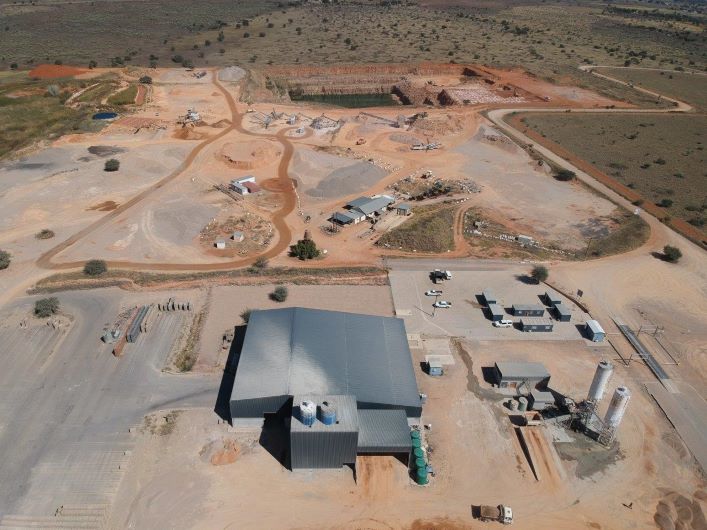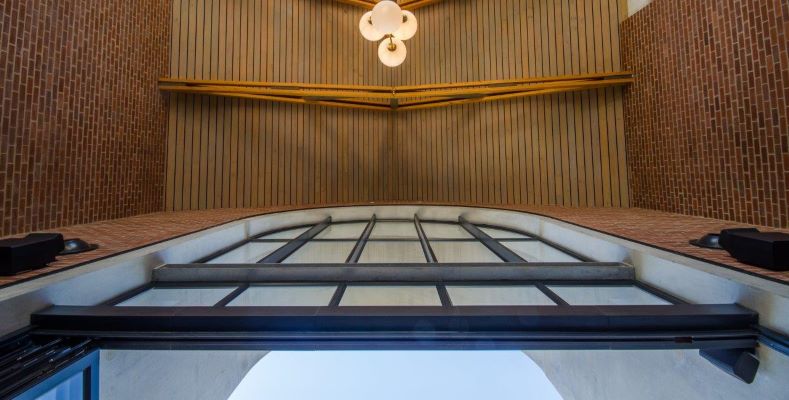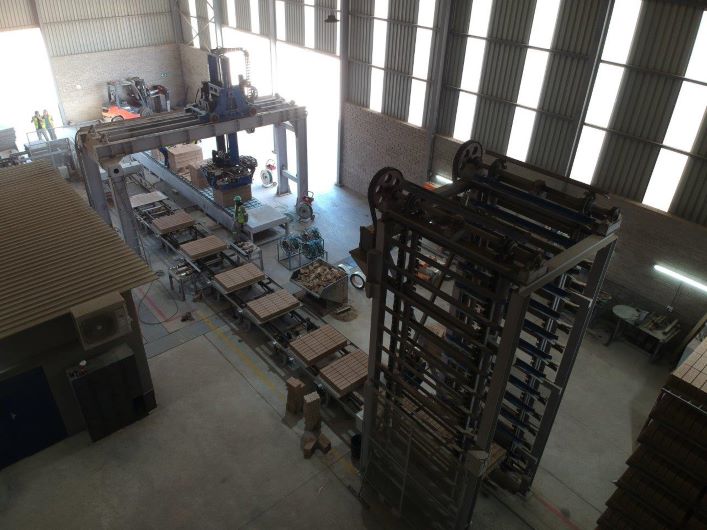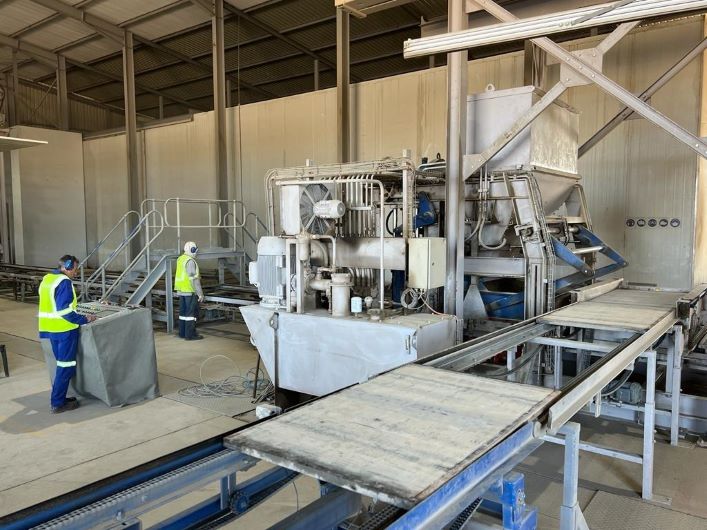
Caption: Part of Northwest Brick Manufacturers plant.
This is Part 3 of a three-part series written by Johann Steyn of Northwest Brick Manufacturers, on behalf of the Concrete Manufacturers Association.
… continued from Part 2.
required.
The VB4X machine is capable of maintaining a cycle time between 12 to 14 seconds per pallet throughout the production cycle. According to the PMSA, the machine can manufacture 1 800 pallets of bricks per day. At an average of 13 seconds, it is theoretically possible for 1 800 brick pallets to be manufactured in six and a half hours.
The remaining three and a half hours of a normal shift is generally wasted due to chronic downtime. Experience has shown that if the mixture stays consistent, the manufacturing machine becomes the lowest contributor to downtime. In our experience, most downtime is caused by the packaging process which delays the return of production pallets to the production line.
We employ a closed system whereby the pallets are returned automatically to the production line via a conveyor and we have introduced several measures to mitigate any delays in this process.
One is the use of battery-driven strapping machines which are much faster than pneumatic machines and only require one machine and two operators to maintain a strapping cycle time of 13 seconds.
We also change machine brick moulds frequently because worn moulds causes the Cuber process, to drop the bricks, and cause downtime.
If we find more than two reject bricks on a pallet, we discard the entire pallet. It is immediately sent back to the mixer while the bricks are still wet and recycled. The net effect of this practice is that less time is wasted in the replacement of rejects during packing and sorting.
Storage also plays an important role in cost-cutting. We store our smaller bricks furthest from the plant and our larger bricks, such as Maxis, are stored closest to the plant. We have planned our storage yard in this manner due to the fact that a pack of maxi bricks is packaged every 78 seconds and a pack of 50mm pavers every 158 seconds. This correlates with the drive time of the forklift and allows the pallets to be moved timeously without causing unnecessary downtime.
These are a couple of simple measures we have taken, providing incredible results in terms of production efficiency. It is also worth noting that every plant is different and that these measures may not be beneficial to other plants.
Nevertheless, we are able to manufacture 2 000 pallets of bricks per day, calculated over an average of 21 days per month in a single shifts. We also stagger our lunch times so that we never have to power down during manufacturing shifts.
In conclusion therefore, it is more beneficial to address productivity in terms of moisture, aggregate and cycle times, rather than focusing on savings in cement. The fact remains that a 10% higher production rate carries greater financial benefits and savings potential than a 5% cement saving which can have a negative effect on product quality.
More news
- DOK-ING’s innovative electric mining equipment unveiled at ElectraMining
- CONCOR’S MASTERY IN FAST TRACK PROJECT IMPLEMENTATION UNDERSCORED BY SAFETY AWARD
- PROMINENT SEA POINT HOTEL REFURBS WITH REHAU
- CONCRETE ROOF TILES USED FOR WALL CLADDING ON COASTAL HOME
- THE GREENEST RESIDENTIAL DEVELOPMENT IN AFRICA?





